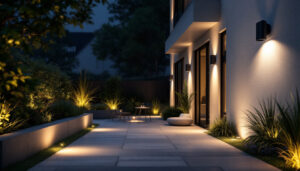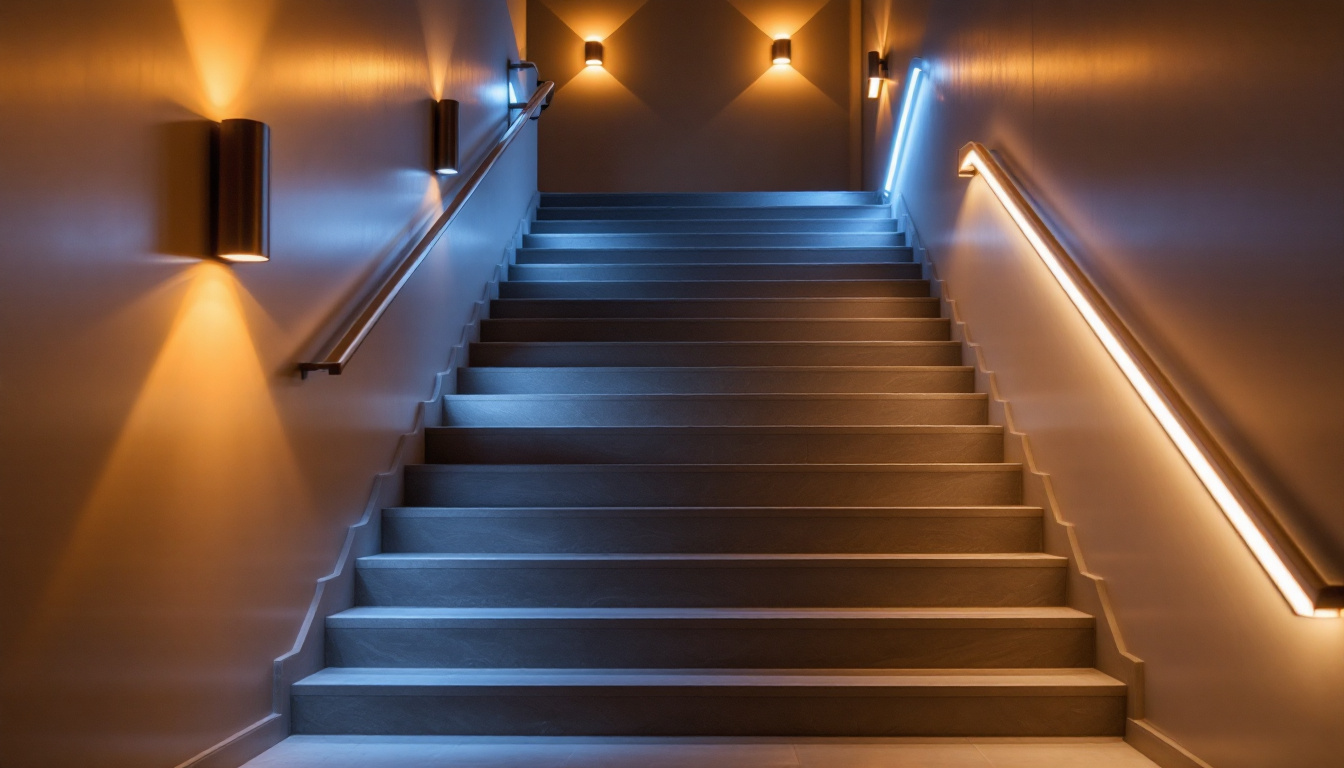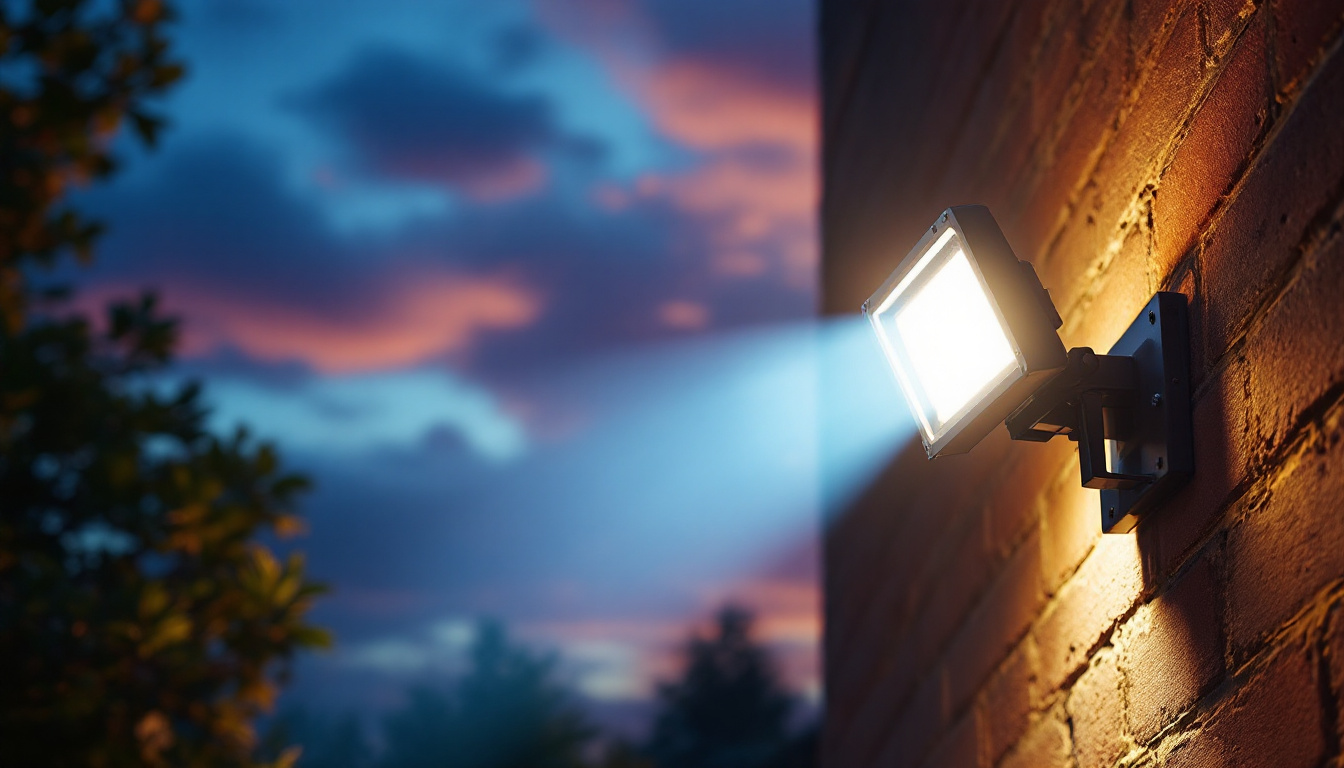

Lighting plays a crucial role in enhancing both the safety and aesthetic appeal of staircases in residential and commercial settings. For lighting contractors, understanding the nuances of stair lighting is essential to delivering quality installations that meet client expectations. This handbook serves as a comprehensive guide to the various aspects of stair lighting, from design considerations to installation techniques.
Stair lighting is not merely a decorative element; it is a vital safety feature in any building. Proper illumination helps prevent accidents by ensuring that each step is visible, reducing the risk of slips and falls. In addition, well-designed stair lighting can enhance the architectural features of a staircase, creating an inviting atmosphere that complements the overall design of the space.
One of the primary functions of stair lighting is to provide adequate visibility. Poorly lit staircases pose significant hazards, especially in high-traffic areas. It is essential to consider the height, width, and depth of each step when planning the lighting layout. The goal should be to create uniform lighting that eliminates shadows and highlights the edges of each step. Moreover, incorporating motion sensors can add an extra layer of safety, automatically illuminating the stairs when someone approaches, ensuring that the path is always visible without the need for manual switches.
Beyond safety, stair lighting can dramatically transform the visual appeal of a space. Creative lighting solutions can accentuate the design elements of a staircase, such as handrails, balusters, and treads. By using various lighting techniques, contractors can enhance the ambiance of a home or commercial property, making it more inviting and visually striking. For instance, LED strip lights can be installed along the underside of each step, providing a modern glow that not only highlights the staircase but also creates a sense of depth and dimension. Additionally, pendant lights or wall sconces can add a touch of elegance, allowing homeowners to express their personal style while ensuring functionality.
In today’s environmentally conscious world, the choice of lighting for staircases also plays a role in energy efficiency and sustainability. Opting for LED lighting not only reduces energy consumption but also has a longer lifespan compared to traditional bulbs, resulting in less waste. Furthermore, integrating smart lighting systems can optimize energy use by allowing users to control the brightness and timing of the lights, ensuring they are only on when needed. This thoughtful approach to stair lighting not only enhances safety and aesthetics but also aligns with sustainable practices, making it a win-win for both property owners and the environment.
There are several types of stair lighting that contractors can consider, each offering unique benefits and applications. Understanding these options allows contractors to tailor their designs to meet specific client needs.
Recessed lighting is a popular choice for staircases, as it provides a clean and modern look. These fixtures are installed into the ceiling or wall, creating an unobtrusive lighting effect. When positioned correctly, recessed lights can illuminate the staircase without creating harsh shadows, ensuring safety and visibility. Additionally, the use of dimmable LED bulbs in recessed fixtures allows homeowners to adjust the brightness according to their needs, creating a warm ambiance for gatherings or a brighter setting for practical use. This versatility makes recessed lighting an excellent choice for both contemporary and traditional staircases.
Wall sconces are another effective option for stair lighting. These fixtures can be mounted on the walls adjacent to the staircase, providing both functional and decorative lighting. Sconces come in various styles and designs, allowing contractors to choose options that complement the overall aesthetic of the space. Moreover, the height at which sconces are installed can greatly influence the atmosphere; lower placements can create a cozy, intimate feel, while higher placements can enhance visibility. Some modern sconces even feature smart technology, enabling homeowners to control the lighting remotely or set schedules, adding convenience to their stairway lighting solution.
Step lights are specifically designed to illuminate each step individually. These fixtures can be installed directly into the risers or treads, providing a subtle glow that enhances safety without being overly bright. Step lights are particularly useful in outdoor settings, where visibility is crucial during nighttime hours. In addition to their practical benefits, step lights can also be integrated into a larger landscape lighting scheme, creating a cohesive look that guides guests safely up and down the stairs. Furthermore, many step lights are available in various colors and finishes, allowing for customization that can match the architecture of the home or the surrounding environment, thereby enhancing the overall design aesthetic.
When designing a stair lighting plan, several factors must be taken into account. From the layout of the staircase to the preferences of the client, each element plays a role in creating an effective lighting solution.
The layout of the staircase significantly impacts the lighting design. Straight staircases may require fewer fixtures compared to spiral or L-shaped staircases, which may necessitate additional lighting points to ensure even illumination. Contractors should assess the configuration and plan the placement of lights accordingly to achieve optimal results.
The color and temperature of the light can dramatically affect the mood of a space. Warm white light (2700K-3000K) creates a cozy and inviting atmosphere, while cool white light (4000K-5000K) offers a more modern and energetic feel. Contractors should discuss light color preferences with clients to ensure the final design aligns with their vision.
In today’s environmentally conscious market, energy efficiency is a significant consideration. LED lighting is an excellent choice for stair lighting, as it consumes less energy and has a longer lifespan compared to traditional incandescent bulbs. By recommending energy-efficient options, contractors can help clients save on electricity costs while reducing their environmental footprint.
Once the design is finalized, the next step is installation. Proper installation techniques are crucial to ensure that the lighting functions as intended and adheres to safety standards.
Before installation, contractors must assess the existing electrical system to determine the best approach for wiring the new lighting fixtures. It is essential to ensure that the electrical load is sufficient to support the additional lighting. If necessary, upgrading the circuit may be required to avoid overloading the system.
Careful consideration should be given to the placement of fixtures. For recessed lighting, the spacing between fixtures should be consistent, typically ranging from 4 to 6 feet apart, depending on the brightness of the bulbs used. For wall sconces, the height at which they are mounted is crucial; they should be positioned at eye level or slightly above to maximize their effectiveness.
After installation, it is vital to test the lighting to ensure it meets the desired specifications. This includes checking for even illumination, ensuring there are no dark spots, and confirming that the fixtures are securely mounted. Adjustments may be necessary to achieve the perfect balance of light and shadow.
Maintaining stair lighting is essential to ensure longevity and performance. Regular maintenance helps avoid issues such as flickering lights or burnt-out bulbs, which can compromise safety and aesthetics.
Contractors should recommend regular inspections of stair lighting systems, especially in high-traffic areas. This includes checking for any signs of wear and tear, such as damaged fixtures or frayed wiring. Identifying issues early can prevent more significant problems down the line.
Dust and debris can accumulate on light fixtures, diminishing their effectiveness. Regular cleaning is essential to maintain optimal brightness. Contractors should advise clients on the best cleaning methods for different types of fixtures to ensure they remain in excellent condition.
For fixtures that use replaceable bulbs, it is crucial to keep a stock of replacements on hand. Advising clients on the type of bulbs used and their expected lifespan can help them stay proactive about replacements, ensuring consistent lighting performance.
The world of lighting design is constantly evolving, with new trends emerging that can enhance stair lighting solutions. Staying informed about these innovations allows contractors to offer cutting-edge options to their clients.
Smart lighting technology has gained popularity in recent years, allowing homeowners to control their lighting through smartphones or voice-activated devices. Incorporating smart stair lighting can enhance convenience and energy efficiency, as clients can adjust brightness levels or set schedules for when lights turn on and off.
Integrated lighting systems, which combine multiple lighting sources into a single design, are becoming increasingly popular. These systems can include a mix of recessed lights, wall sconces, and step lights, creating a cohesive and dynamic lighting scheme. Contractors should explore integrated solutions that offer versatility and style.
Color-changing LED lights allow for customizable lighting experiences. This feature can be particularly appealing in residential settings, where homeowners may want to change the ambiance based on different occasions or moods. Offering color-changing options can set a contractor apart in a competitive market.
Stair lighting is a critical aspect of both safety and design in any building. For lighting contractors, understanding the various types of stair lighting, design considerations, installation techniques, and maintenance practices is essential to delivering exceptional results. By staying informed about innovative trends and technologies, contractors can provide clients with cutting-edge solutions that enhance their spaces.
Ultimately, successful stair lighting combines functionality with aesthetics, creating a harmonious balance that elevates the overall design of a property. As the demand for quality lighting solutions continues to grow, lighting contractors must be equipped with the knowledge and skills to meet and exceed client expectations.
Ready to take your stair lighting projects to the next level? At LumenWholesale, we provide lighting contractors with an exceptional range of high-quality, spec-grade lighting products at prices that can’t be beaten. Say goodbye to local distributor markups and hello to superior lighting solutions that meet the highest industry standards. With our hassle-free bulk buying and free shipping, you’ll enjoy premium lighting at the best value — all without hidden fees or compromises. Elevate your lighting installations with the perfect blend of quality, affordability, and convenience. Discover wholesale lighting at the best value today and brighten up your next project with confidence.

Discover essential insights and tips for lighting contractors in our comprehensive guide on flood lights.

Discover the ultimate guide for lighting contractors on LED in tube technology.

Discover how industrial pendant lamps can revolutionize the workflow for lighting contractors by offering cost-effective solutions and time-saving installation processes.

Discover why purchasing light bulbs and LED tubes in bulk from local distributors might not be the best choice.
Get notified when NEW deals are released.
Optimize your budget with wholesale discounts.
Only top-quality, specification-grade lighting products.
No additional costs at checkout - what you see is what you pay.
We understand the unique needs of contractors.